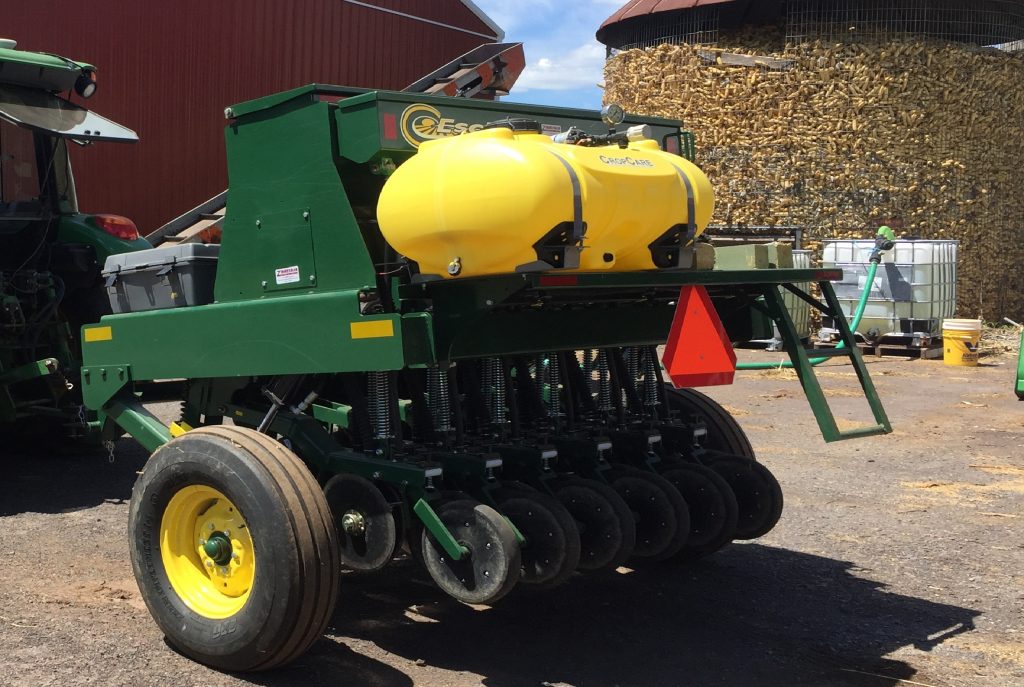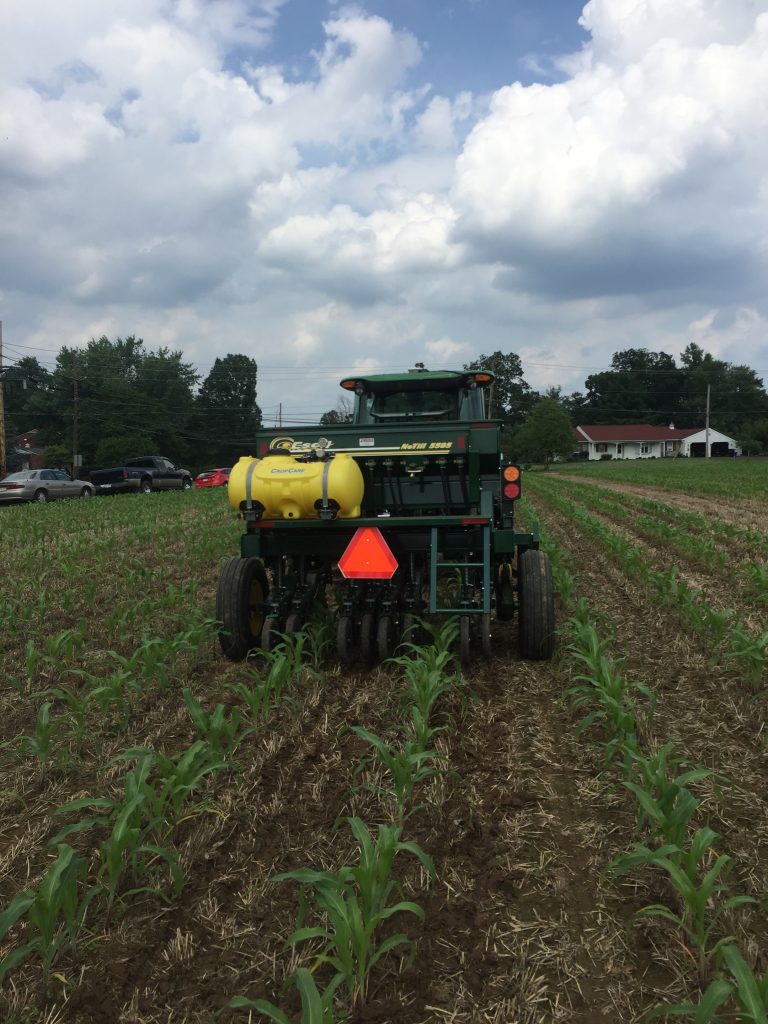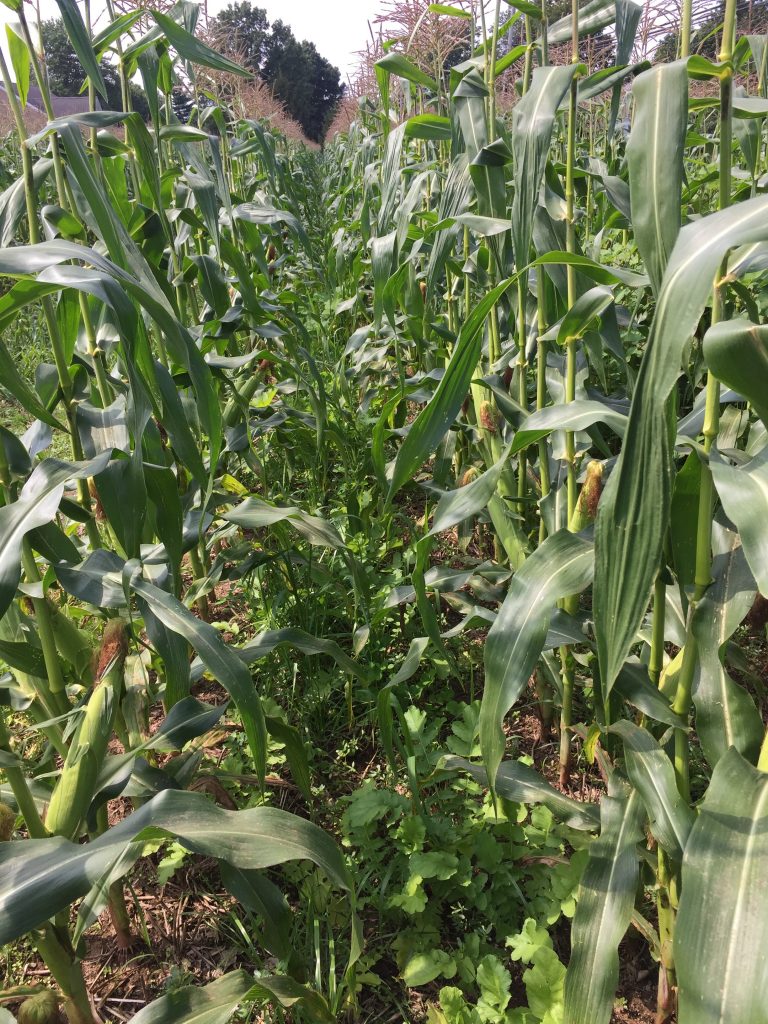Rental Equipment & No-Till Planting
Not in Montgomery County?
For list of no-till equipment available outside throughout the state:
PA No Till Equipment Spreadsheet
Esch 5505 No-Till Drill
Available for rental for no-till planting in/around Montgomery Co!
5ft 6in no-drill , 5.5″ row spacing: allows for better ground cover, weed control and higher yield
Built in sprayer for spraying down a pasture with glyphosate to renovate and re-establish vegetation
Ideal uses include:
- Pasture renovation
- Cover crops
- Interseeding
- No-till planting
- Pollinator & wildlife habitat
- No-mow/low-mow grass meadows
- Basin naturalization
Montgomery County No-Till Drill Details
To learn more or use this equipment, click here and contact Abby at 610-489-4506 x24 or areiter@montgomeryconservation.org

Benefits of No-till planting
No till farming plants crops without disturbing the soil. This provides many benefits including:
- Reduced soil erosion
- Improved soil structure and soil moisture
- Increased organic matter & soil fertility
- Increased soil microbial activity and biological diversity
- Increased nutrient cycling and reduced nutrient runoff
- Wildlife habitat
- Reduced labor, fuel & irrigation
Interseeding
https://extension.psu.edu/cover-crop-interseeder-improving-the-success-in-corn
Interseeding is the practice of no-till planting cover crops in between existing corn rows. Interseeding helps to establish cover crops in areas where cover crop establishment is not as feasible because of a late harvest and short season. It allows the cover crops to become established prior to fall harvest of the main crop, to protect the soil throughout winter. The resulting cover crop stand is better established than a stand planted following harvest of the corn crop in the fall.
Interseeding provides increased soil protection, reduced erosion, improved nutrient cycling and retention, increased soil moisture, wildlife habitat and increased soil organic matter and microbial activity.

Interseeding cover crops in corn

Interseeded cover crop mix, 2 months growth
Through our NRCS CIG Grant:
Interseeding Benefits, Lessons Learned and Feasibility:
Interseeding is the practice of no-till planting cover crops in between existing corn rows. Interseeding helps to establish cover crops in areas where cover crop establishment is not as feasible because of a late harvest and short season. It allows the cover crops to become established prior to fall harvest of the main crop, to protect the soil throughout winter. The resulting cover crop stand is better established than a stand planted following harvest of the corn crop in the fall.
Interseeding provides increased soil protection, reduced erosion, improved nutrient cycling and retention, increased soil moisture, wildlife habitat and increased soil organic matter and microbial activity.
Through two interseeding field days, it was discovered that interseeded cover crops did establish well in mature corn. There was little moisture, sunlight or nutrient competition, which is a common fear. The cover crops grew well, and were fully established at the time of corn harvest in the fall. This helps to minimize the risk of cover crop failure or minimal growth if planted to late in the fall season.
A challenge with the interseeder that we used through this project was row spacing, as the equipment used in this project was in fact just a modified no till grain drill, with removed row units (not intended as a corn planter). The true Interseeder is properly sized and row spacing appropriate to plant standard corn row widths. This would make the equipment more broadly usable amongst the farming community in traditional corn fields.
It was determined that hosting demonstration field days and publishing education & outreach on the practice of insterseeding is extremely beneficial, as interseeding is a new practice, not often utilized. There is a need for education and outreach for farmers to understand both how and why interseeding should be practiced. The field days provided excellent opportunity for farmers to see the development of the cover crops in the corn stand, prior to harvest.
A barrier to adoption of interseeding (or any new practice) is always cost – mainly the cost of purchasing the equipment, as well as cost associated with seed for cover crop planting. However cover crop usage is increasing in popularity and adoption in our region of Southeast PA, so cost is a less restrictive barrier. Timing of cover crop planting is another barrier, often limited by weather and farmer time to plant during busy summer months. However, it was proven that by establishing the cover crop early, in July into knee high corn, a denser, well established stand of cover crops resulted in the fall, to protect soil throughout winter. Another barrier to adoption was determined to be knowledge and education on the topic. Further education and outreach on interseeding is needed to see increase in adoption of interseeding.
Through this grant funded project, availability of a rental interseeder eliminated the barrier of equipment cost, as farmers had the potential to try out the equipment on their own farms for the first time, promoting adoption. It was determined through this project that availability of rental equipment as well as technical assistance to use the equipment and education on the practice is extremely beneficial increasing adoption of ag conservation practices. We would encourage other entities to establish an equipment rental program, in conjunction with demonstration field days, to increase knowledge and adoption of practices amongst the farming community.